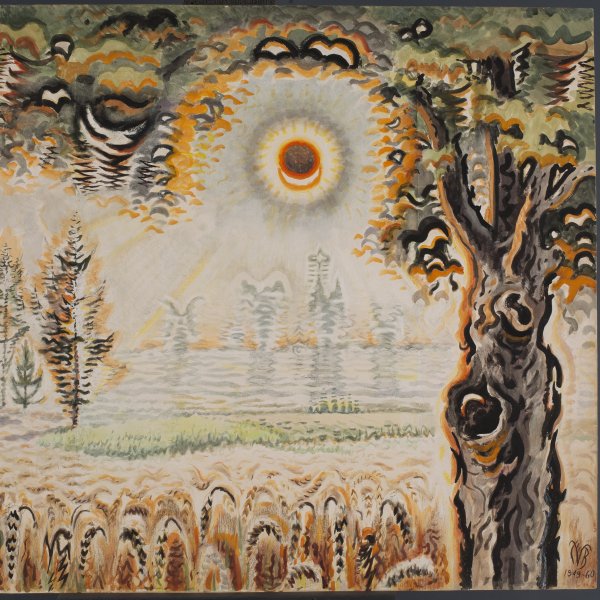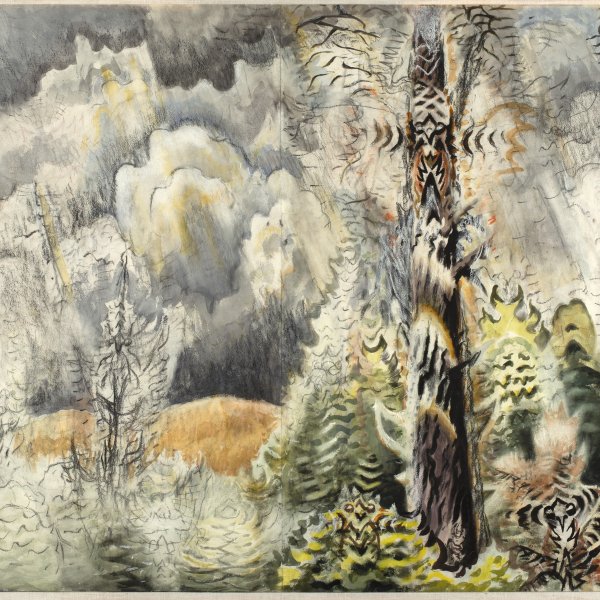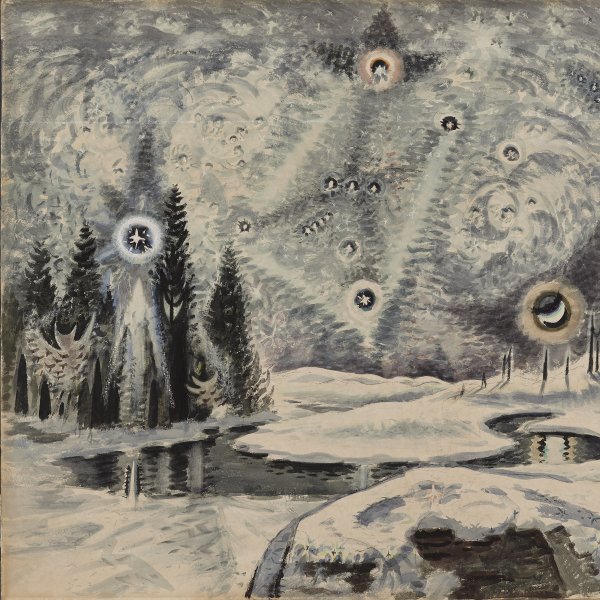Charles Ephraim Burchfield
Charles Burchfield, an American painter, enrolled at the Cleveland School of Art in 1912. In 1916 he was awarded a scholarship to study at the National Academy of Design in New York, but left after only a day and returned to Salem (Ohio), the city where he had grown up. From the outset he showed a preference for watercolour and gave free rein to his imagination in his works. These paintings combined an arbitrary use of colour with themes related to his childhood or admiration for nature. Thereafter Burchfield developed a personal style that remained independent of innovations in European art.
After serving in the army in 1918 and the beginning of 1919, Burchfield worked for the wallpaper firm M.H. Birge & Sons of Buffalo (New York) until the end of the 1920s. In 1925 he settled in Gardenville, on the outskirts of Buffalo, where he spent the rest of his life. Following his move to this town his art became more realistic and he concentrated on capturing the architecture and industry of the surrounding area. He adopted a larger format and, although watercolour continued to be his favourite medium, the manner of applying the paint in layered brushstrokes led his works to appear denser and less ethereal.
The fanciful worlds depicted in Burchfield’s early paintings reappeared in about 1943. He reworked some of these older themes and concentrated on depicting landscapes that reflected the spirituality he attributed to nature. Due to this pantheistic aspect he is considered a successor and the last exponent of the nineteenth-century school of American landscape artists.







